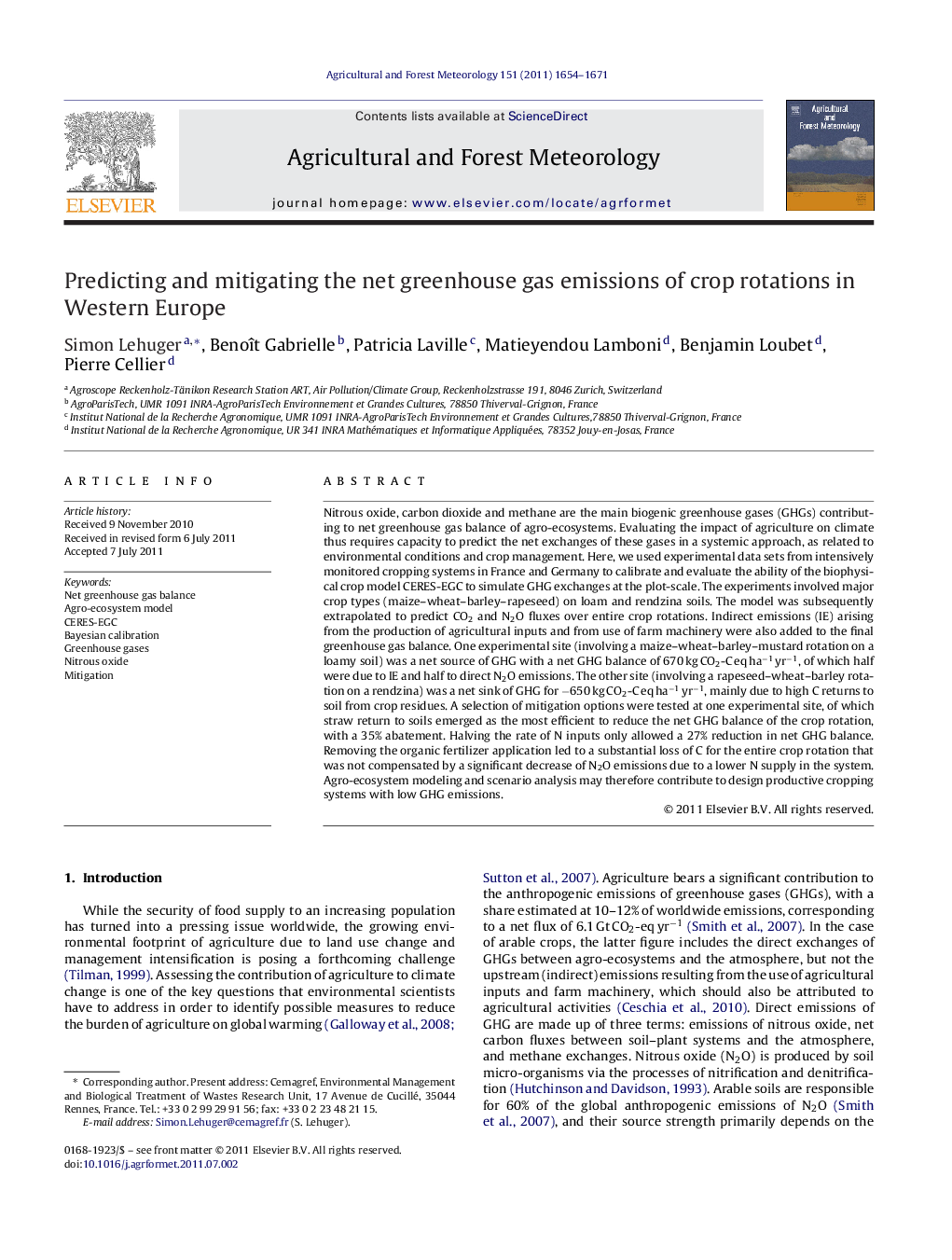| Article ID | Journal | Published Year | Pages | File Type |
|---|---|---|---|---|
| 10249627 | Agricultural and Forest Meteorology | 2011 | 18 Pages |
Abstract
⺠The CERES-EGC model was applied to estimate the GHG exchanges of different cropping systems. ⺠A Bayesian calibration of the most sensitive model parameters allowed the model to be highly improved and the model was extrapolated to predict CO2 and N2O fluxes at rotation time-scale. ⺠One experimental site was a net source of GHG with a GWP of 670 kg CO2-C eq haâ1 yrâ1, of which half were due to N2O emissions. The other site was a net sink of GHG for â650 kg CO2-C eq haâ1 yrâ1, mainly due to a high C returns to soil from crop residues. ⺠A selection of mitigation options were tested in a experimental site, of which straw return to soils emerged as the most efficient to reduce the GWP of the crop rotation, with a 35% abatement.
Related Topics
Physical Sciences and Engineering
Earth and Planetary Sciences
Atmospheric Science
Authors
Simon Lehuger, Benoît Gabrielle, Patricia Laville, Matieyendou Lamboni, Benjamin Loubet, Pierre Cellier,
